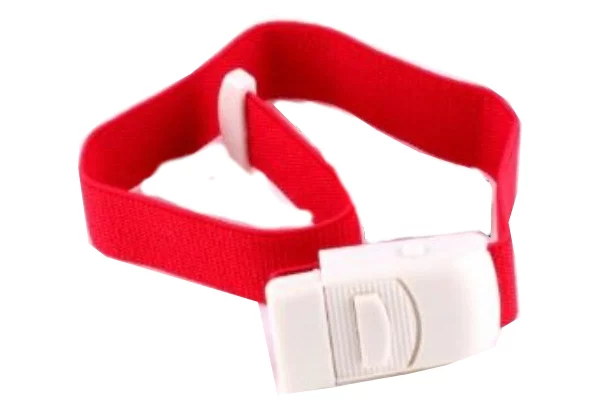Tourniquet is a tool that functions in suppression and is used to control venous and arterial circulation in the surgical area for a certain period of time. Tourniquet serves to stop bleeding in open wounds, with the aim that the patient does not bleed out.
A tourniquet is a first aid tool whose role is very important. The tourniquet function helps stop blood flow in open wounds. This tool that is often encountered when measuring blood pressure should only be used in emergency conditions.
How to install and use Tourniquet
– Cover the place where the
tourniquet will be placed with gauze so that the skin doesn’t blister – Place the tourniquet between the wound and the heart, by tying the knot over the wound
– tighten the bandage with a rotating stick until the bleeding stops
– Every 10-15 minutes the tourniquet must be loosened by rotating stick in opposite direction
– Wait – 1 minute. If within one minute the blood is no longer flowing, leave the tourniquet in a loose state.
– If bleeding occurs again, immediately tighten the tourniquet again.
When is the right time to use it?
There are at least two conditions that allow the use of a tourniquet:
- If the bleeding does not stop after pressing and lifting simultaneously
- If it is impossible to keep the wound area under pressure
The method of pressing and lifting the injured area should be done simultaneously whenever possible. For example, raising the hand so that it is higher than the heart while pressing with a finger or cloth.
If the blood continues to come out after doing this, then you might consider using a tourniquet.
In addition, if a patient has more than one open wound, a tourniquet can also be a lifesaver. Mainly, in the time span while waiting for the ambulance to arrive. Of course it will be tiring if the rescuer has to press several injured areas at once for quite a long time.
Controversy over the use of a tourniquet
Historically, the use of a tourniquet was first documented on the battlefield in 1674. However, there is controversy that accompanies the use of this tool.
Complications due to the use of tourniquets are closely related to severe tissue damage. An example is the experience of war soldiers whose limbs had to be amputated. There is an assumption that this occurs because of the use of a tourniquet, but it could be due to infection.
This tool was popularly used on the battlefield because the risk of severe bleeding from open wounds was quite high. The soldiers needed a solution to stop the bleeding as soon as possible and stay awake, even continue the war.
Despite its popularity, the use of this tourniquet has earned a negative reputation in the emergency relief field.Meanwhile, in the context of everyday life, the use of a tourniquet is considered the last resort.
Logically, people who are not soldiers of war are still more free to apply other measures such as pressing or raising the injured area.However, the views surrounding the tourniquet controversy have changed. Now, heavy bleeding or hemorrhage is a very serious issue. When this happens, it must be stopped immediately.
Every second is at stake. Otherwise, the patient may die.

